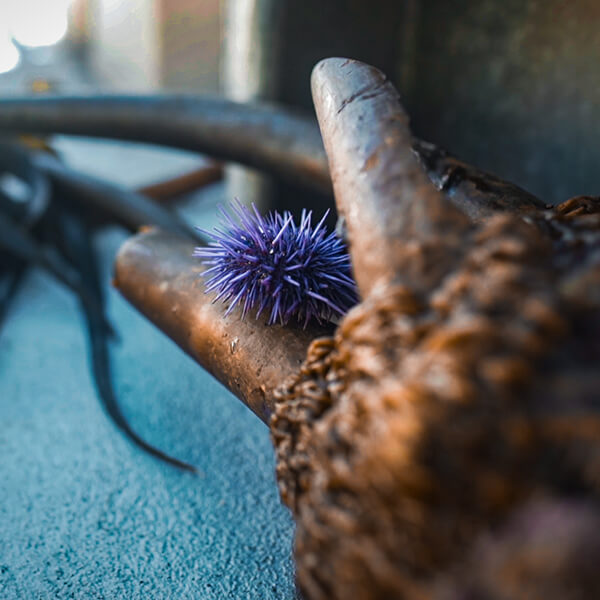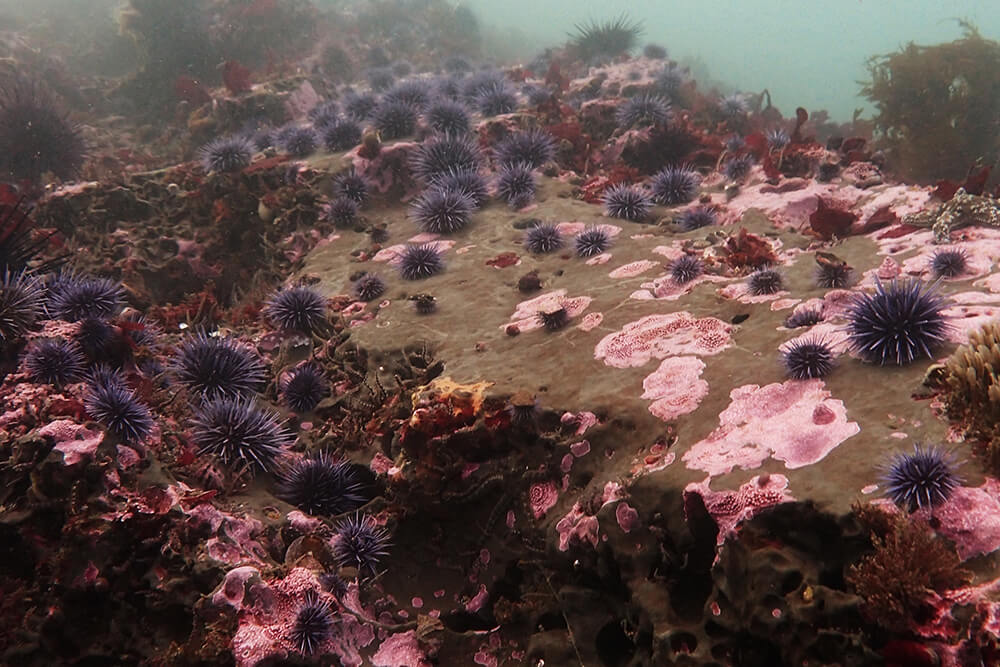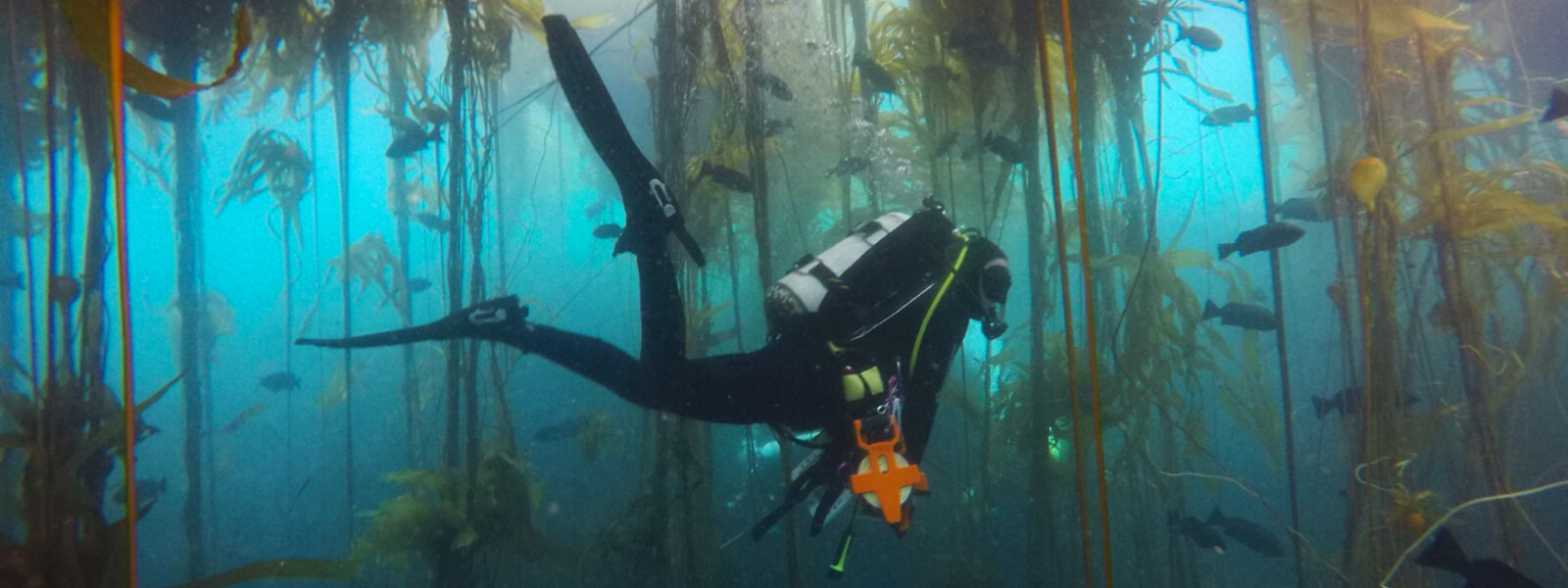Lending a Kelping Hand
Kelp forests harbor incredible biodiversity, serving as shelter and providing food for a wide array of animals from fish to sea otters. However, in recent years kelp forests along the West Coast suffered a dramatic decline. Even in protected ocean spaces, such as Greater Farallones and Monterey Bay national marine sanctuaries, kelp forest ecosystems transitioned from algal-dominated to urchin-dominated. This shift was accompanied by a steep decline in the variety of species living in this habitat and a collapse of some recreational and commercial fisheries. In an effort to support rapid kelp recovery, the Greater Farallones Association developed the Sonoma-Mendocino Bull Kelp Recovery Plan, which outlines strategies for restoration site selection, monitoring, research, and community engagement.

Photo: Nick Zachar/NOAA

Photo: Nick Zachar/NOAA

Purple sea urchins consume kelp holdfasts – essentially the kelp’s root system – and can send kelp fronds spinning off into the current. If there are too many sea urchins, as there are in many areas along the West Coast, the kelp forest can vanish. Researchers are working to understand how to better manage purple urchin populations and support kelp forest restoration and recovery. Photo: Cynthia Catton/CDFW


